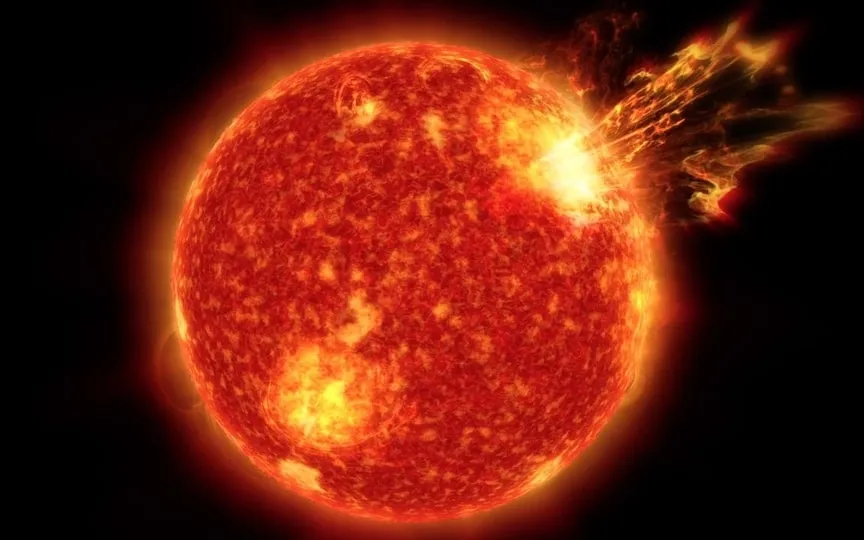Alert Issued: Potential Solar Storm to Impact Earth this Weekend – Get the Latest Information
An unforeseen coronal mass ejection (CME) cloud struck the Earth on September 12, resulting in a strong G2-class solar storm. Although the storm was of moderate strength, it managed to disrupt wireless communication and cause vibrant aurora lights in regions with higher latitudes. However, the solar storm activity is expected to persist. Another CME has been released from the Sun and is currently directed towards our planet. According to predictions, it is anticipated to arrive on September 17, potentially causing a minor impact. Be aware of the potential hazards that may arise.
According to a SpaceWeather.com report, “Yesterday, September 14th, the magnetic filament connecting sunspots AR3423 and AR3425 erupted. The explosion hurled a CME into space near the edge of Earth’s shock zone. A flash strike on September 17th could trigger G1-G2 geomagnetic storms .
A solar storm will hit Earth this weekend
The resulting storm could be a G1-G2 category, according to the report. Such a massive solar storm can damage satellites, affect mobile networks and Internet connectivity, and cause power grid failure. Although radiation does not directly affect people in terms of health, disruptions to emergency services and power outages in important places such as hospitals can still be quite destructive to technology-based infrastructure.
But this is not the only danger that threatens the Earth right now. According to a post by SpaceWeatherLive’s official X account, another moderate M2.5 solar flare erupted last night. It’s unclear if it launched a CME, but solar observatories are currently monitoring the region for possible signs of one. If that happens, it would be the fourth solar storm event of the month, and we’re only halfway through.
The role of NOAA’s GOES-16 satellite in the solar storm
GOES-16, formerly known as GOES-R before it reached geostationary orbit, is the first of the GOES-R geostationary operational environmental satellites operated by NASA and NOAA. It was launched on November 19, 2016 and became operational on December 18, 2017. GOES-16 is located in geostationary orbit over the Atlantic Ocean and provides continuous images and atmospheric measurements of the Earth’s Western Hemisphere. It also has a lightning mapper that can detect both cloud-to-cloud and cloud-to-ground lightning. GOES-16 is an important tool for weather forecasting, climate monitoring and space weather forecasting.




